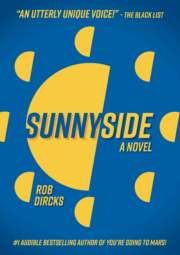Two Simple Rules of Editing
by E. D. E. Bell
 As a former engineer, data analyst, strategic advisor, and manager who entered the fiction writing and fiction editing world not too far apart and not so long ago, I’ve had to come up to speed quickly on concepts and best practices that a lot of editors my age have been practicing a long time.
As a former engineer, data analyst, strategic advisor, and manager who entered the fiction writing and fiction editing world not too far apart and not so long ago, I’ve had to come up to speed quickly on concepts and best practices that a lot of editors my age have been practicing a long time.
Years of technical experience cause me to break a problem down, see how it goes, apply lessons learned, and repeat. Pretty much the engineer’s life.
And through this, two rules have emerged: I call them Emily’s Rule #1 and Rule #2. These rules apply to all levels of editing, from developmental through proof. Please note, these rules apply to heartfelt, individual fiction. If you’re writing more standard material, freelancing external content, or beholden to other parties (e.g. a publisher’s process), then maybe not as much.
I’m not trying to be pretentious, and I’ve already qualified my fiction credentials. But through our small press and our anthologies, I’ve worked with a lot of emerging authors over the last few years. I’ve found these rules help put things in perspective for them, and I hope maybe they will for someone else.
So, there’s only two—let’s go!
Rule #1: Consider all edits with an open mind
It sounds simple, but it’s not. Sometimes it helps to glance through all the edits, then just close the file. Come back the next day, if you can. Then consider, why did the editor make this suggestion? Don’t dismiss anything, and don’t hold anything too sacred to be changed.
Rule #2: Only make changes you like
It sounds simple, but it’s not. If the editor’s version is smoother, or more correct, or whatever, but you don’t like it, then don’t do it. You’ll be the one answering to readers if it reads funny, but that’s your call. It’s your story. It’s your art. You’re the one who knows what you meant.
The thing is, it makes no sense for someone to be taking 100% of an editor’s suggestions. If an editor is so perfect that they are hitting the nail on the head with every suggestion, then that also means that they haven’t pushed you at all. They haven’t offered any whatabouts or style choices.
Sometimes an edit needs to be modified. You may see why they offered a suggestion, but not exactly like that suggestion. In this case, address the problem they’ve pointed out, even if you address it a different way.
Editors are consultants who give you their best advice. You need them, because they see through different eyes than you do. As they say, even editors have editors. You can’t see your own work unbiased. You can’t. And first drafts are never their best.
So, I often use a dressing room analogy to explain the idea of expert advice. You try a new look, and ask the stylist (editor), “How’s this?” They may recommend against that bright yellow bracelet. Rule #1 asks, “Ok, why am I wearing this? Does it look good?” Then Rule #2 either chimes in with, “Oh, wow, that doesn’t look right,” or “I’m wearing it on purpose. I know some people won’t like this pop of color, but it’s important to my look.” Or even—”I see why it’s clashing, so I’m switching to this orange bracelet.”
I have seen what happens when people don’t give both rules serious weight.
A Rule #1 person may say, “Editors know best!” and take all the edits, swooshing through tracked changes. Sure, this works in some cases, but it is much less likely to result in a unique, artistic product with a strong voice. Also, editors are looking at a lot at once. They may have misunderstood the intent. Or sometimes, it’s just not a good change.
And I’ve seen Rule #2 people as well. “I know what I’m doing—I wrote it the right way!” And what results is an indulgent piece that doesn’t shine the way it would have with a few more facets. Readers won’t resonate with that type of writing, because if it’s only focused on the author, then it’s not focused on the readers too. It’s closed. That shows.
Now, the caveats. Of course there are caveats—more than I can list here. Just a few little thoughts:
If you need to change editors, change editors. Not all writers and editors are a good match. It’s so personal. And it’s not usually about good or bad, it’s about the match. It’s like that time Elton made the album without Bernie. Matches are important! And don’t be shy to pay for a sample, to see if it works.
Make sure the editor understands your voice. In my experience, I shy away from editors with strict rules. Not that they don’t know existing rules, but when they declare, this can never happen ever…yeah that’s not true. It’s fiction. You can do your thing. People can not like it, sure, but you can do it. (Except serial commas…that is serious. I’m kidding. I’m not.)
One of the reasons I have turned against these hard editing “rules” is the influence they have on stomping out dialect. Much of my early writing had all sorts of Great Lakes dialect edited out. I think on things and use sunk in non-standard ways. It’s fine. How about this—it’s alright.
This issue becomes even more pronounced when dealing with dialects like African American Vernacular English (AAVE) or a broad set of international usage, including English as a non-primary language. Forcing everything into standard usage drains so much of the voice out of a piece. This includes bigger things like verb tenses, but also smaller things like preposition use, forcing commas, or removing fragments.
There is a lot more to editing than a short blog can cover, and most importantly, people need to learn for themselves. That learning never ends. Yet if you put these two rules in mind, I do think that’s a good start. Now—go get editing!
•••
E. D. E. Bell writes unconventional fantasy fiction in Ferndale, Michigan, blending traditional and modern elements to explore themes of compassion and reflection. She is also the executive editor of Atthis Arts, a small press dedicated to the author’s artistic voice. You can follow her adventures at edebell.com and atthisarts.com.


